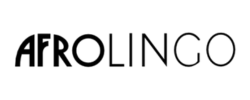Only 8.1% of South Africans speak English at home. And yet, it remains the dominant language in business, government, and tech. It’s the language of contracts and code, apps and advertising. But it rarely speaks to the heart.
South Africa isn’t just diverse. It’s multilingual by design, legally, culturally, and operationally. With 11 official languages (12 as of 2023), every linguistic nuance reflects something deeper: identity, belonging, trust. In a market shaped by apartheid’s legacy and a constitutional commitment to equality, language carries weight. It signals who is seen and who is ignored.
For brands and platforms serious about growth, understanding the role of local languages in business is now essential to earning trust and driving growth in South Africa.
In this article, we explore the country’s multilingual framework, its impact on communication and consumer behavior, and the strategies that help brands localize effectively in such a diverse market.
From 11 to 12 Official South African Languages—And Why It Matters
After apartheid, South Africa didn’t just change governments. It rewrote what fairness looked like. One of the boldest moves was declaring 11 official languages of South Africa in the 1996 Constitution. This wasn’t just a political act; it was a preservation of South Africa’s linguistic heritage, ensuring that every community’s voice remains part of the nation’s story.
And for the first time, language wasn’t about hierarchy. It was about equity, across courtrooms, classrooms, government forms, and even road signs.

To make that real, the country established the Pan South African Language Board (PanSALB), an independent body tasked with ensuring that language equity wasn’t just on paper. It meant people had the right to access public services, education, and information in the language they actually use at home. Not as a nice-to-have. As a constitutional guarantee.
And in 2023, that commitment deepened. South African Sign Language (SASL) was officially added as the 12th language through the Eighteenth Constitutional Amendment. That’s not just a milestone. It’s a mandate. Government websites, televised addresses, and even courtroom proceedings now require SASL integration.

For businesses and institutions, this sends a clear message: inclusion isn’t optional. If you want to operate in South Africa, you don’t just “speak to the market.” You speak like it, in the languages people live in every day.
Next read: Why You Need Brand Localization
Top South African Languages in Numbers—Understanding Language Diversity in South Africa
It’s one thing to recognize official languages. It’s another to understand how they live, breathe, and shift.
When you look at the most spoken languages in South Africa, you quickly realize how much of the country’s story is told outside of English. isiZulu leads at roughly 25% of the population. isiXhosa follows at around 15%. Afrikaans, shaped by Dutch and Cape Malay roots, comes next.
English, for all its visibility, remains the home language for less than 10% of South Africans. And yet it dominates legal, digital, and corporate ecosystems.
The following is the distribution of languages spoken by individuals inside and outside of households in South Africa 2018

But usage doesn’t end with census data. In urban hubs like Johannesburg and Cape Town, there’s a rise in linguistic cross-pollination: Shona, Chichewa, and Portuguese. These are the unofficial tongues of cross-border migration, informal trade, and inner-city life. If your localization strategy ignores them, you will be missing the people behind the metrics.
What people speak at home isn’t always what they use at work. Or in court. Or when buying a phone plan.
This split between “language of life” and “language of function” means content strategy needs nuance. Marketing in English may get you reach. But it won’t get you recalled. And it won’t get you trust.
Want to understand how localization directly impacts market entry, customer trust, and growth potential? Read our in-depth guide — South Africa Market: Localization Is Your Solution.
South African Culture and Languages
In South Africa, language and culture are inseparable. Each phrase, idiom, and greeting carries a story, a reflection of where people come from and how they see the world. Language isn’t just a tool for multilingual communication; it’s an anchor for identity, pride, and belonging. And in a market as culturally layered as South Africa, that connection matters more than ever.
For brands and institutions, this means communication can’t be one-size-fits-all. People instinctively trust voices that sound like their own. In fact, studies show that consumers are far more likely to engage with, remember, and buy from companies that communicate in their mother tongue. It’s not about sentimentality. It’s about psychology. When language feels familiar, it feels credible.
English may provide visibility, but indigenous languages create authenticity. They reflect the cultural heartbeat of South Africa, the tone, humor, and values people connect with most.
Ready to expand beyond South Africa? Discover how localization can open doors across the continent in our feature — Unlocking Opportunities: How to Enter the African Market.

Speaking the Internet’s Language: South Africa’s New Linguistic Mix
Online, the rules bend.
Scroll TikTok in South Africa and you’ll meet Tsotsitaal, a Johannesburg-born street slang blending isiZulu, Afrikaans, English, and Sesotho. You might also encounter Kaapse Afrikaans, a Cape Coloured dialect mixing Afrikaans, English, and local expressions. These aren’t just languages. They’re linguistic remix cultures.
And brands are catching on. Nando’s is famous for its trilingual quips. MTN’s campaigns use youth slang to sell data with humor and heart. Because if you sound like a textbook, you lose them. But sound like a friend? You’re in.
Still, there’s a line. Regulated industries like banks, insurance, legal, and the public sector need a formal register. You don’t translate a privacy policy in Tsotsitaal. You localize your chatbot in it.
The shift is clear. Localization now means voice, tone, rhythm. Not just dictionary definitions.
Barriers to Localization in South Africa—and Why They’re Worth Tackling
Every multilingual market has its complexities. But South Africa takes it up a notch. With 12 official languages and hundreds of dialects, localizing here is less about simple translation and more about building an adaptable communication system. It’s not impossible—but it does require intention, investment, and insight.
Here’s what often stands in the way (and what smart brands plan for):
- Limited digital resources
Many South African languages don’t yet have large digital corpora or advanced translation tools. That means machine translation often struggles with accuracy, idioms, and tone.
- Dialect diversity
isiZulu spoken in KwaZulu-Natal isn’t quite the same as what you’ll hear in Gauteng. Dialectal nuance matters, and one-size-fits-all messaging won’t cut it.
- Talent gaps
Skilled, industry-trained linguists, especially in tech, healthcare, and law, are in short supply. Finding the right translators takes more than a quick search.
- Cultural sensitivity
A mistranslated greeting or an unintended gender reference can quickly erode trust. What seems minor in one language can feel disrespectful in another.
- Overreliance on automation
AI translation is fast, but it isn’t fluent in context or emotion. Without human oversight, even small mistakes can distort meaning.
Still, every one of these barriers is surmountable, with local expertise, in-market validation, and a willingness to treat language as an investment, not an afterthought.

From Strategy to Execution: Localization Tactics for South African Languages
So, what does it actually take to get localization right in South Africa? Strategy alone won’t do it. You need execution that respects the country’s linguistic complexity and cultural diversity. Whether you’re a global brand entering the market or a local organization expanding your reach, success comes down to how intentionally you adapt your communication.
If you’re serious about localizing in South Africa, here’s where to start:
For Brands and NGOs:
- Map languages by region and media channel.
- Localize key user flows: product education, onboarding, customer support.
- Build glossaries across all 11 official languages (plus SASL planning).
- Transcreate; don’t just translate. Humor, idioms, references? Make them feel native.
- Work with native speakers in South Africa to validate tone and accuracy, then use real-time analytics to measure performance and continuously adapt.
For Educators and Public Institutions:
- Prioritize mother-tongue instruction in early learning.
- Normalize SASL as a default in public-facing video content.
- Use WhatsApp, SMS, and community radio in top regional languages—not just national media.
In South Africa, Language Is the Message
For brands expanding into the region, the language map of South Africa isn’t just demographic data; it’s a roadmap for meaningful connection.
South African languages are not barriers. They’re bridges. Each word, each dialect, each turn of phrase, a way to say: “We see you. We’re for you.”
In a multilingual nation, you don’t get brand loyalty without linguistic respect. So, the question isn’t if you should localize. It’s when, where, and how well you’ll do it.
Ready to start? Reach out to AfroLingo to localize meaningfully across South Africa’s linguistic map.
Frequently Asked Questions About South African Languages
What are the 11 official languages of South Africa?
South Africa officially recognizes 11 languages under its 1996 Constitution: isiZulu, isiXhosa, Afrikaans, English, Sepedi (Northern Sotho), Setswana, Sesotho (Southern Sotho), Xitsonga, Tshivenda, siSwati, and isiNdebele. In 2023, South African Sign Language (SASL) was added as the 12th official language, strengthening the country’s commitment to accessibility and inclusion.
Which language is the most widely spoken in South Africa?
isiZulu is the most widely spoken language in South Africa, used as a home language by roughly a quarter of the population. It dominates KwaZulu-Natal and is also common in Gauteng, the country’s economic hub. isiXhosa and Afrikaans follow closely, while English, though spoken by less than 10% of South Africans at home, remains the primary language of business, law, and digital communication.
How does language diversity influence South African culture?
Language diversity is one of South Africa’s defining cultural strengths. Each language represents a community’s history, traditions, and worldview. This mix creates a national culture that values plurality, inclusion, and shared identity. From storytelling and song to idioms and humor, the country’s linguistic heritage is deeply woven into how South Africans express pride, belonging, and unity.
Why is multilingual communication important in South Africa?
Multilingual communication ensures that people can access information, services, and opportunities in the language they understand best. It promotes equality and inclusion—values rooted in South Africa’s Constitution. For organizations, it’s also practical: communicating in multiple languages increases reach, engagement, and trust across diverse audiences. In short, multilingual communication isn’t a courtesy; it’s a business and social necessity.
How can brands connect with customers in different South African languages?
Brands connect best when they communicate in ways that feel authentic and culturally aware. That means:
– Using local languages in customer service, marketing, and social channels to show respect and relevance.
– Partnering with native speakers in South Africa to ensure tone and phrasing feel natural.
– Adapting campaigns through transcreation, not just translation—capturing humor, idioms, and cultural context.
– Using real-time analytics to measure how audiences respond in each language and refine accordingly.
When brands speak the languages their customers live in, they build relationships—not just recognition


